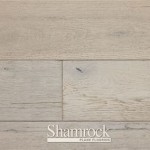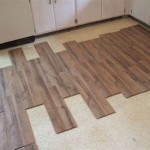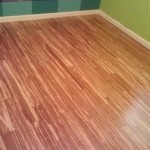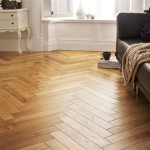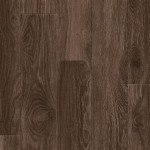Essential Aspects of Engineered Wood Flooring Laying on Concrete
Upgrading your flooring with engineered wood on concrete can transform the aesthetics and functionality of your space. However, proper installation is crucial to ensure durability and long-term performance. Here are some essential aspects to consider:
1. Moisture Barrier: Moisture is the nemesis of wood flooring. Before installing on concrete, lay a vapor barrier to prevent moisture from seeping up through the flooring and causing damage. Choose a high-quality barrier rated for concrete subfloors.
2. Underlayment: Underlayment serves as a cushion and sound barrier between the concrete and the wood flooring. It also helps level out imperfections in the concrete surface, ensuring a smooth and stable installation. Select an appropriate underlayment type based on the thickness and type of engineered wood you're using.
3. Flat Surface: The concrete subfloor should be flat and level to prevent unevenness and potential buckling in the flooring. Use a level to check for any irregularities and address them by grinding or leveling the surface as necessary.
4. Adhesive: The choice of adhesive depends on the type of engineered wood and the specific requirements of the installation. Use a high-quality adhesive formulated for engineered wood flooring on concrete. Proper adhesive application is crucial for a strong bond and long-term stability.
5. Floating Installation: Floating installations do not require gluing the wood planks to the subfloor. Instead, they rely on a click-lock system to secure the planks together. This method is suitable for certain engineered wood flooring types and offers the advantage of being easier to remove or replace in the future.
6. Expansion Gap: Engineered wood flooring expands and contracts with changes in temperature and humidity. Leave an expansion gap around the perimeter of the room and between fixed objects to prevent buckling and gaps from forming.
7. Acclimation: Before installation, allow the engineered wood flooring to acclimate to the temperature and humidity of the installation area for several days. This allows the wood to adjust and minimizes the risk of expansion or contraction after installation.
8. Professional Installation: While it may seem like a DIY project, engineered wood flooring laying on concrete is best left to experienced professionals. They have the knowledge, tools, and expertise to ensure a flawless installation that will last for years to come.
By carefully considering and addressing these essential aspects, you can achieve a stunning and durable engineered wood floor on concrete that will enhance the beauty and functionality of your space for years to come.

Installing Wood Flooring Over Concrete Diy

Installing Engineered Hardwood On Concrete Twenty Oak

Hardwood Over Concrete Auten Wideplank Flooring

Installing Engineered Hardwood On Concrete Twenty Oak

Installing Hardwood Floors On Concrete Subfloors

Installing Engineered Flooring On A Concrete Slab Fine Homebuilding

How To Install Engineered Flooring On Concrete Adm

Getting It Right Wood Flooring Over A Concrete Subfloor Page 2 Of 3 Construction Specifier

Installing Engineered Hardwood On Concrete Villagio Guide

How To Install An Engineered Hardwood Floor
Related Posts

